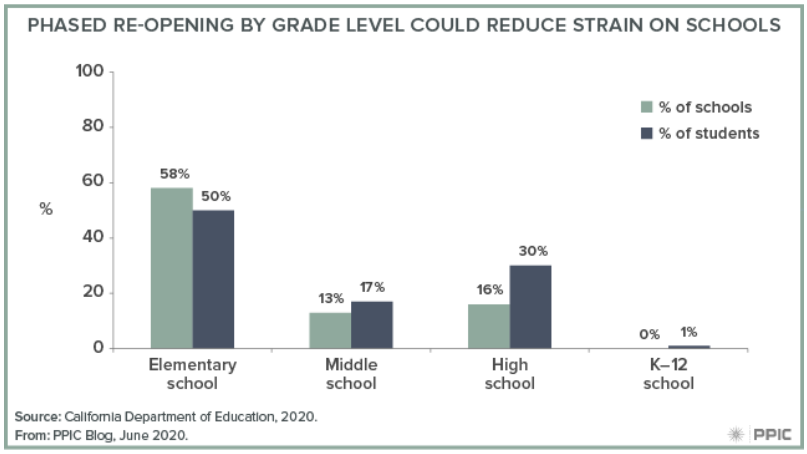Leaders in the California Department of Education are proposing to reopen schools in phases, by grade level with elementary school students and teachers returning to campuses first. Elementary school students constitute the greatest number of K-12 students and the greatest percentage of schools in California, so prioritizing their return to school will serve the most students and families.

Though as Senator Lamar Alexander in Senate hearings suggested just last week, on June 10, 2020, the process to normality may be more protracted even as California schools open, to a degree, for business as usual in the fall:
Schools should plan for COVID to last at least a year. It’ll likely be the fall of 2021, though, before we begin to approach normal.
U.S. Senate Health, Education, Labor & Pensions Committee; June 10, 2020
Some educators argue that sitting still and focusing on a computer screen for distance learning may be more difficult for elementary-aged students, than older secondary school students. So, younger students’ in-person instruction may need to be prioritized. Secondary school students and their parents may, therefore, want to plan for the continuation of distance learning and learn to take more initiative in their education, so as to not fall behind in the curriculum standards during this time of COVID-induced uncertainty in relation to the schools opening and to what degree over likely the next twelve months.
Regardless of which group of students returns to campuses first, educators continue to discuss the need for staggered schedules, where only a portion of a student body will be on campus at a time and on alternating days of in-person instruction. Working parents may need to continue planning for childcare, as they may be returning to offices and places of business, or make alternative arrangements with employers to continue working remotely from home.
Thus, the sooner that educators, students and parents adjust their mindset and daily routines to account for a pandemic that will continue to unfold for at least the next twelve months, then all stakeholders can focus their efforts to ensure a continuity of instruction for all students, so each student ca gain a greater confidence in their aptitude that with time and experience, can bring about hopefully a greater individual and collective prosperity.



